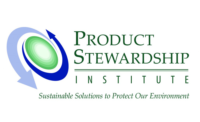PSI Releases Carpet and Mattress Recycling How-To Guides

The Product Stewardship Institute (PSI) released two new how-to guides for recycling scrap carpet and used mattresses to help state and local government officials address the multi-million dollar challenge of managing these bulky products safely, responsibly and cost-effectively.
Scrap carpet poses a looming threat, with Americans discarding nearly 3.9 million tons of carpet and rugs each year and recycling only about 7.5%. More than 50,000 mattresses are discarded each day in the U.S., the equivalent of close to 20 million annually. While as much as 90% of mattress components—steel, cotton and foam—are recyclable, less than 5% of mattresses are salvaged annually; the rest present operational problems for our nation's landfills and waste-to-energy plants.
“Recycling used carpet and mattresses saves resources, creates jobs and reduces greenhouse gas emissions and energy use,” said Scott Cassel, PSI's chief executive officer and founder. “Currently, the cost of recycling or disposing of these products falls on government and taxpayers, and that is not sustainable. The burden needs to be shifted to manufacturers and consumers for these valuable materials to enter the circular economy.”
Funded by the U.S. Department of Agriculture (USDA), the guides lay out key steps to reduce waste and set the stage for successful product stewardship programs. More specifically, the guides provide tools for state and local governments to increase awareness of recycling opportunities and best practices; implement convenient and effective collection systems, collaborate with various stakeholders in the carpet and mattress life cycle and lay the groundwork for extended producer responsibility (EPR) legislation.
“Bulky waste recycling depends on the collaborative efforts of all involved stakeholders—including manufacturers, collectors, storage facilities, processors and state and local governments,” said Kathy Frevert, senior environmental scientist at the California Department of Resources Recycling and Recovery (CalRecycle). “Ensuring that materials are properly managed as they flow from one link to another in the management chain, and that the economics are viable at each link, is important for developing an effective program.”
For more information, visit productstewardship.us.
Looking for a reprint of this article?
From high-res PDFs to custom plaques, order your copy today!







.jpg?t=1690771780)

